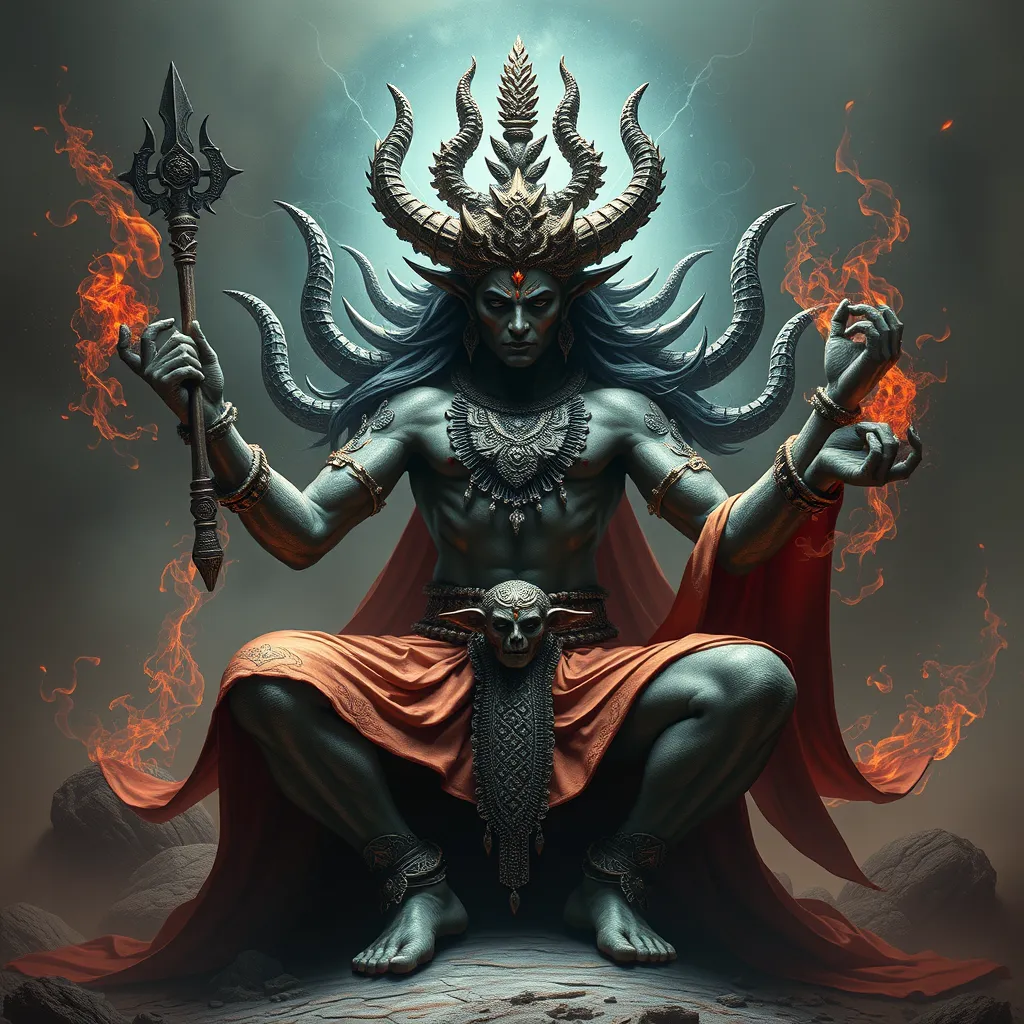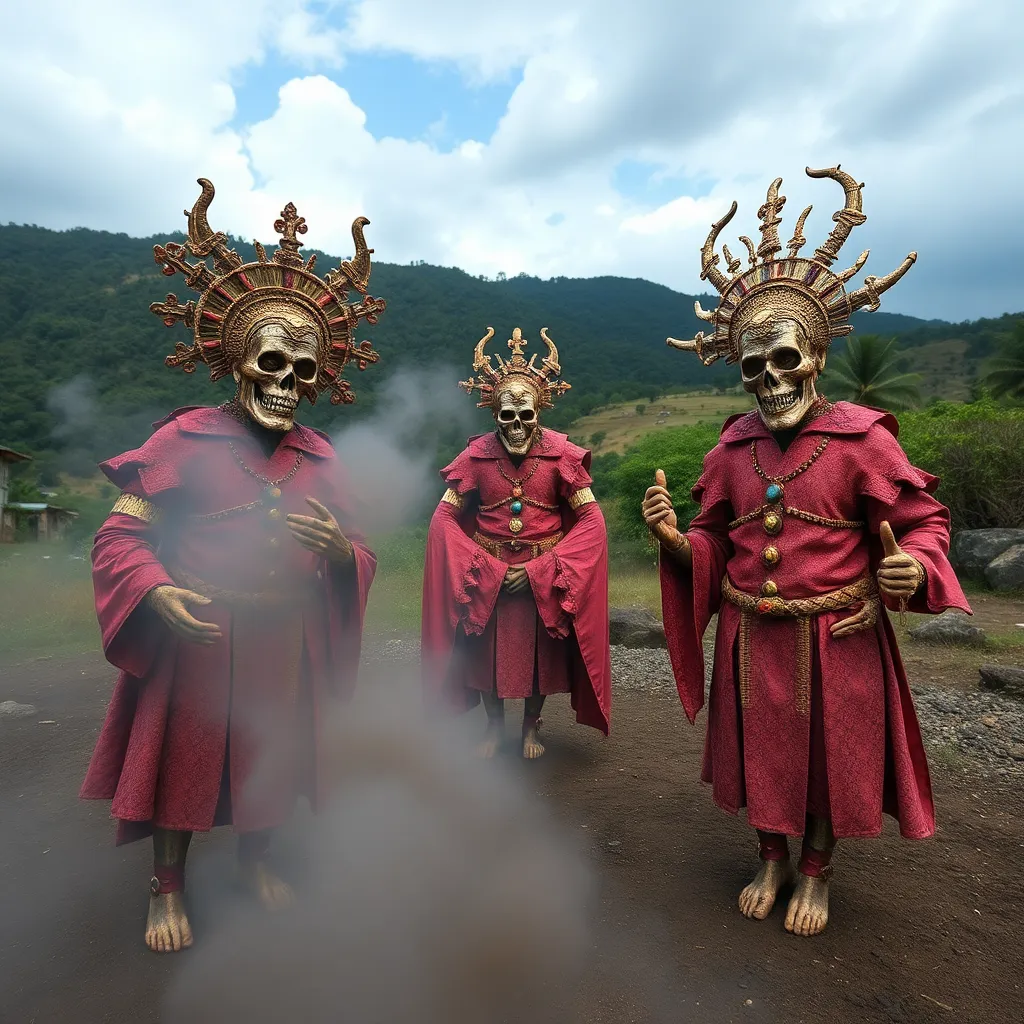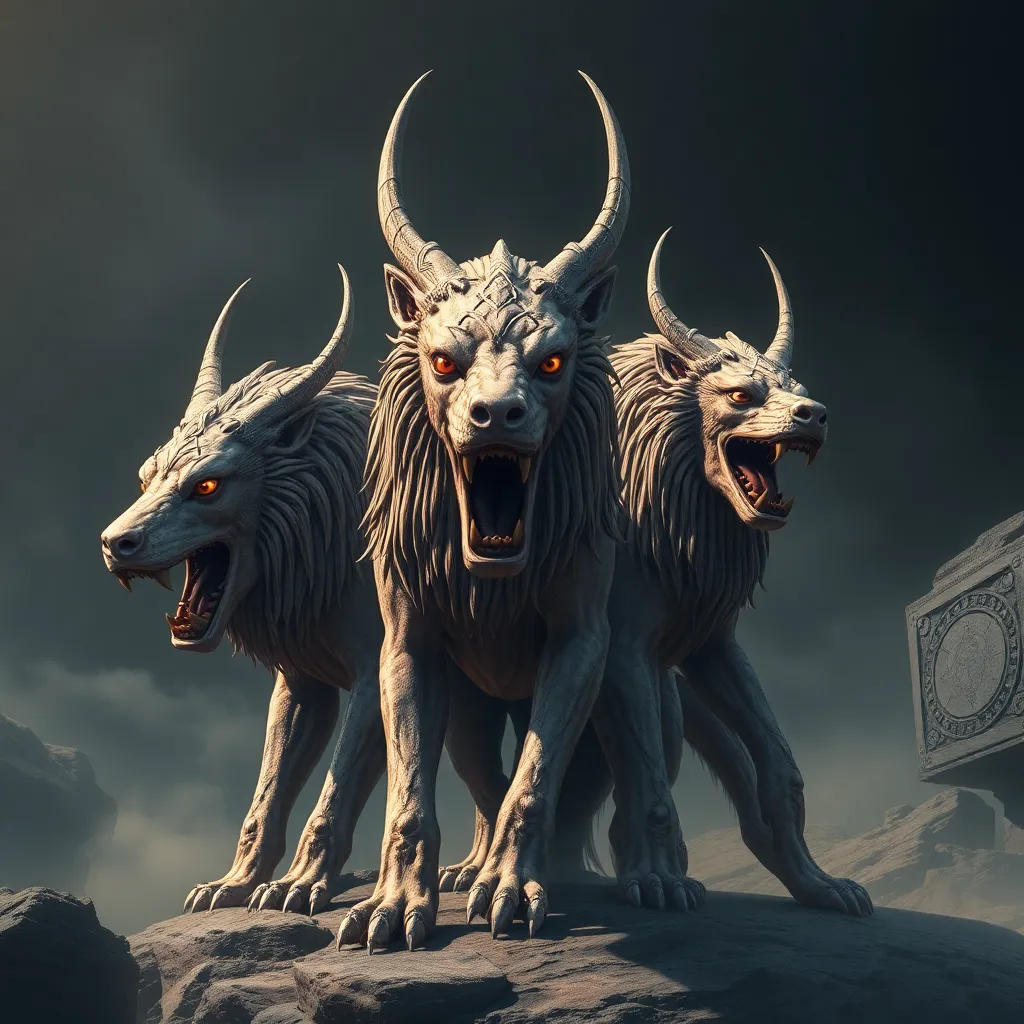The Asura in Persian Mythology: The Demonic Counterpart of the Gods
I. Introduction
The concept of Asura in Persian mythology embodies a complex and multifaceted aspect of ancient belief systems. Defined as powerful demonic figures, Asuras occupy a significant space in the pantheon of Persian myth, often standing in stark contrast to the benevolent deities. This article aims to delve into the historical context, nature, prominent figures, and cultural impact of Asura, shedding light on their relevance in both ancient and contemporary understanding of good and evil.
II. Historical Context of Persian Mythology
To fully appreciate the role of Asura, it is essential to explore the historical context of Persian mythology. Ancient Persian religious beliefs were deeply intertwined with Zoroastrianism, which served as a guiding philosophy for the civilization.
A. Overview of ancient Persian religious beliefs
Persian religion was characterized by a dualistic worldview, where the forces of good and evil were in constant conflict. Ahura Mazda, the supreme deity, represented order, truth, and light, while the forces opposed to him were often represented by demonic figures, including Asuras.
B. The role of mythology in Persian culture
Mythology played a crucial role in shaping the moral and ethical framework of Persian society. Through stories and allegories, the deeds of gods and demons illustrated the consequences of human actions and the importance of maintaining cosmic order.
C. Evolution of the Asura concept through history
Over time, the depiction of Asura evolved from being mere adversaries of the gods to complex characters symbolizing chaos and opposition to divine order. This transformation reflects the changing perceptions of good and evil in Persian thought.
III. The Nature of Asura
The nature of Asura is characterized by their attributes, roles, and the inherent duality that defines them in Persian mythology.
A. Characteristics and attributes of Asura
- Powerful beings often associated with chaos and destruction.
- Possess supernatural abilities that challenge the established order.
- Represent moral ambiguity, showcasing traits that can be both admirable and fearsome.
B. Comparison with deities in Persian mythology
Asuras are often contrasted with the benevolent deities, such as Ahura Mazda. While gods embody virtues like wisdom and compassion, Asuras are linked to ambition, pride, and rebellion.
C. The duality of good and evil in Asura representation
The Asura encapsulate the duality within Persian mythology, acting as catalysts for change and conflict. This dual nature underscores the complexity of moral judgment, suggesting that both gods and demons are essential for the balance of the universe.
IV. The Asura in Zoroastrianism
Zoroastrianism, the dominant religious tradition of ancient Persia, provides a unique framework for understanding the role of Asura in its cosmology.
A. The role of Asura in Zoroastrian beliefs
In Zoroastrianism, Asuras are often viewed as malevolent beings that oppose the will of Ahura Mazda. They embody chaos and serve to test the faithful, challenging their commitment to truth and righteousness.
B. The contrast between Ahura and Asura
The distinction between Ahura (the divine) and Asura (the demonic) is central to Zoroastrian teachings. This dichotomy reflects a broader philosophical inquiry into the nature of existence, where good and evil are not just opposing forces but interdependent elements of life.
C. Asura as embodiments of chaos and opposition to order
Asuras symbolize the chaotic forces that disrupt harmony and order in the world. Their actions often serve as a foil to the divine plan, illustrating the constant struggle between light and darkness.
V. Prominent Asura Figures
Throughout Persian mythology, several Asura figures stand out due to their significant roles in various narratives.
A. Notable Asura in mythology and their stories
- Ahriman: The most prominent Asura, Ahriman, embodies the spirit of chaos and is directly opposed to Ahura Mazda.
- Angra Mainyu: Another key figure, Angra Mainyu, is often seen as a personification of evil, leading the Asura in their opposition to the divine.
B. Analysis of their roles and significance
The stories involving these Asura figures often highlight the consequences of hubris and the inevitability of cosmic justice. They serve as cautionary tales that reflect the moral dilemmas faced by humanity.
C. Comparative study with other mythological demon figures
When compared to demon figures in other cultures, such as the Asuras in Hindu mythology or the demons of Judeo-Christian traditions, the Persian Asura exhibit unique qualities. Unlike some cultures that portray demons strictly as evil, Persian mythology offers a more nuanced perspective, suggesting that Asuras can also embody traits of ambition and resilience.
VI. Cultural Impact of Asura
The legacy of Asura extends beyond mythology into various forms of cultural expression, influencing literature, art, and modern media.
A. Influence on Persian literature and art
Asura figures have inspired countless works of Persian literature, from epic poems to dramatic plays, often symbolizing the struggle between good and evil. Artistic representations of Asuras in ancient Persian art highlight their formidable nature and complex characteristics.
B. The portrayal of Asura in modern media
In contemporary culture, Asuras have found a place in films, video games, and literature, often reinterpreted to reflect modern themes of conflict and morality.
C. The legacy of Asura in contemporary culture
The enduring legacy of Asura in contemporary culture speaks to the universal themes of struggle and redemption, making these figures relevant in today’s narratives.
VII. The Asura in Comparative Mythology
To further understand the Asura, it is beneficial to compare them with similar figures in other mythological traditions.
A. Similarities with demonic figures in other cultures
- Like many demon figures, Asuras are often portrayed as adversaries of the divine.
- They embody chaos and moral ambiguity, similar to figures found in various mythologies.
B. Differences between Asura and counterparts in Hindu and Buddhist traditions
While the term “Asura” is also found in Hindu and Buddhist contexts, its connotation differs. In Hinduism, Asuras can be both good and evil, whereas in Persian mythology, they are more uniformly associated with chaos and disorder.
C. The significance of these comparisons in understanding Asura
These comparisons highlight the cultural and philosophical nuances that define the concept of Asura, reflecting broader human concerns about morality, power, and the nature of existence.
VIII. Conclusion
In summary, the Asura play a pivotal role in Persian mythology as potent symbols of chaos and opposition to divine order. Their complex nature and the duality they represent resonate through history, influencing cultural narratives and moral frameworks. The enduring legacy of the Asura reminds us of the intricacies of good and evil, inviting ongoing reflection on the human experience.



